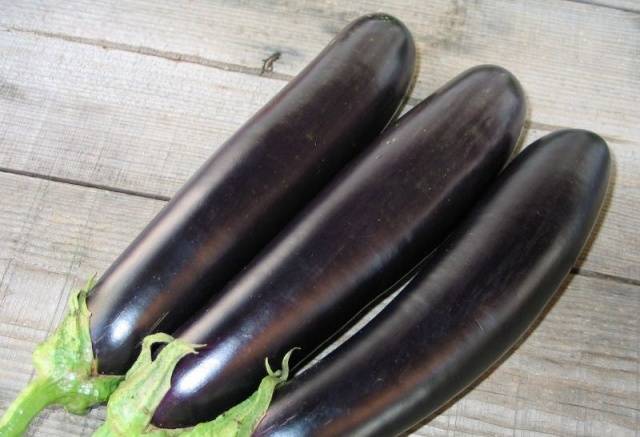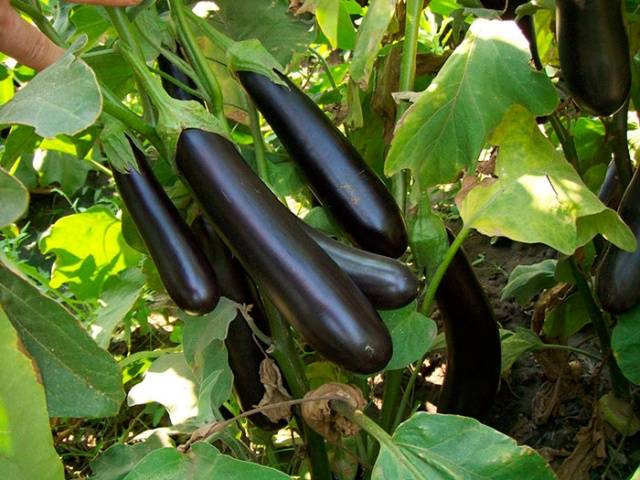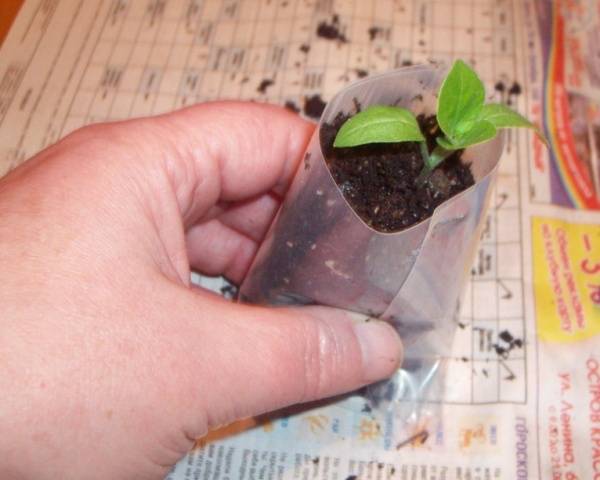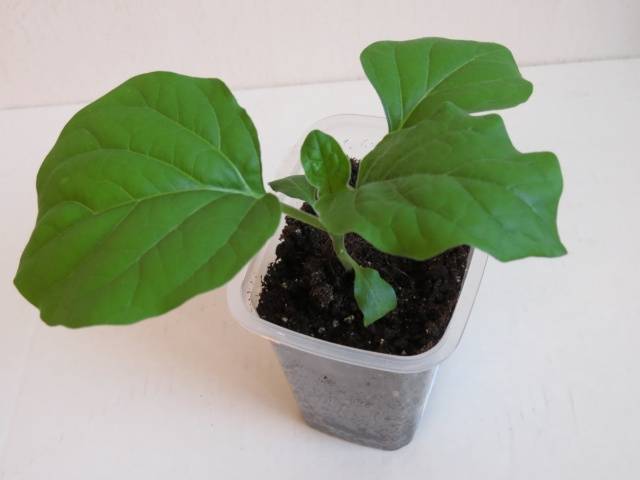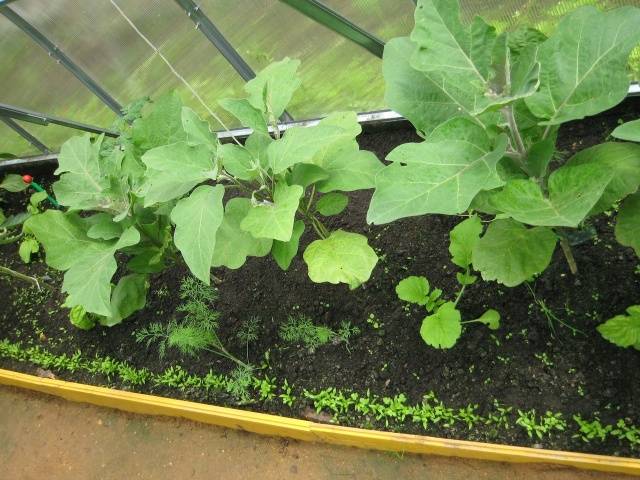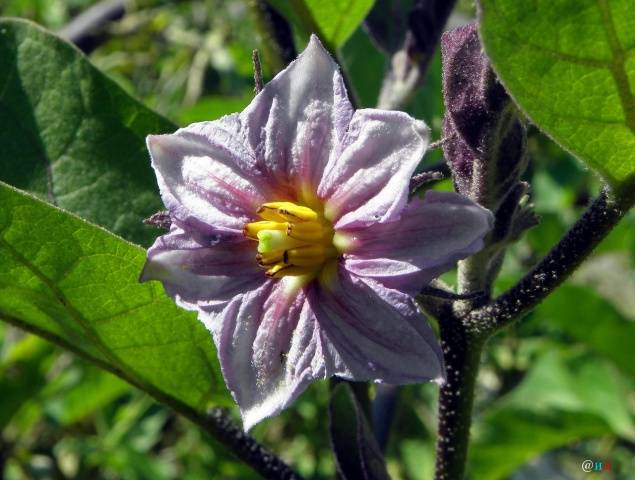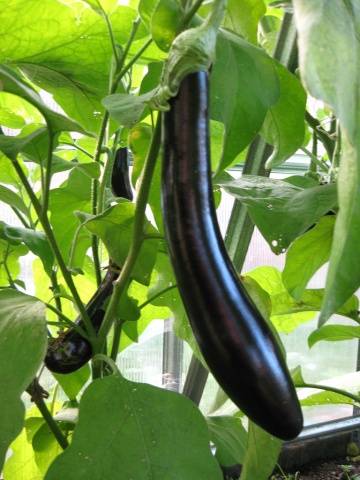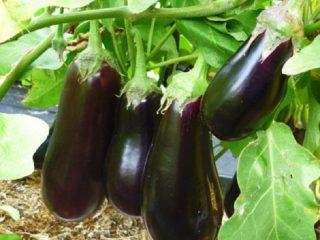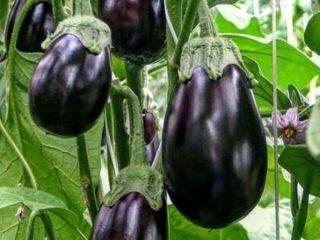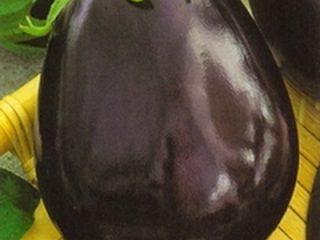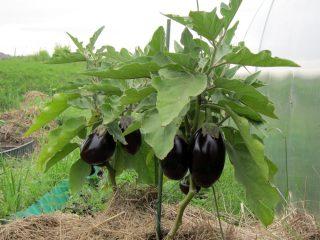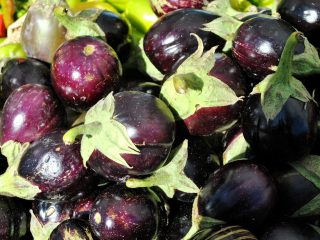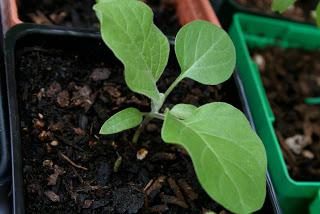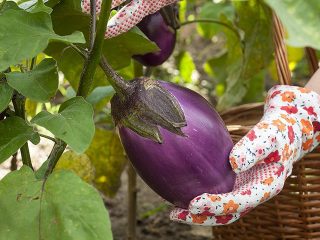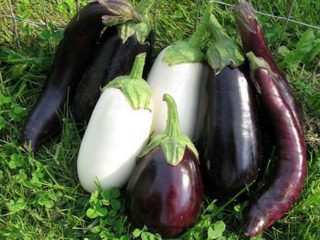Content
Thanks to breeding work, new varieties are constantly appearing on the eggplant seed market. Eggplant varieties Valentina F1 were registered in Russia in 2007. They were bred by the Dutch company Monsanto. This hybrid, which is characterized by excellent taste, is gaining popularity among gardeners due to its early ripening period and resistance to viruses.
Hybrid characteristics
In the Russian climate, Valentina F1 eggplant is grown in greenhouses or under film covers. In the southern regions, bushes grow in open ground. Hybrid Valentina is noted for its resistance to weather changes. In unfavorable conditions, flowers stay on the plant, do not fall off, and ovaries and fruits are formed.
Cute dark purple long eggplant fruits with original pendants decorate the hybrid bush already on the 60-70th day after planting in the beds. The very first, large fruits can be picked in July. The crop ripens three months after germination. More than 3 kg of vegetables are harvested from one square meter of Valentina plantings. The fruits of the Valentina F1 eggplant are uniform and are famous for their excellent commercial properties.
The fruits can be stored for about a month in a cool room without losing their taste.Vegetables are used to prepare various dishes and preparations.
It is important to choose the moment of culinary ripeness of the eggplant. Usually by this time the fruits have a rich dark shade and a glossy cover. Vegetables with dull, slightly pale skin are overripe; small, hard seeds are already beginning to form.
Description of the plant
Bushes of the Valentina variety are erect, vigorous, semi-spreading, rising to 0.8-0.9 m. The trunk of the plant is pubescent, distinguished by a faint light purple color. Medium-sized leaves of a rich green hue, notched along the edges. The flowers are large, white and purple.
Dark purple fruits are elongated, drop-shaped, can stretch up to 20-26 cm. The diameter of the thickened, lower part of the fruit is up to 5 cm, the upper part is up to 4 cm. The weight of the fruit reaches 200-250 g. The skin is glossy, thin, easy to peel . The dense flesh has a pleasant creamy white color. Descriptions of gardeners who grew this hybrid note a soft and delicate taste of the fruit, without a hint of bitterness.
Advantages of eggplant
In their descriptions and reviews, vegetable growers highly appreciate the quality of the fruits and the plant itself of the Valentina eggplant variety.
- Precociousness and productivity;
- Excellent taste of fruits and their presentation;
- Unpretentiousness of plants;
- Resistance to tobacco mosaic virus.
Growing a hybrid
They begin sowing Valentina eggplant seeds from the beginning of March.Typically, Dutch seeds are sold already coated with special substances after pre-sowing treatment. But in the reviews of summer residents there are mentions that after soaking in growth stimulants, the seeds of the hybrid sprouted faster. Soaking in aloe juice for half a day also speeds up seed germination.
Then the seeds are dried and germinated.
- They are placed in wet wipes, cotton wool or hydrogel and left at a temperature of 25 0WITH;
- The germinated seeds of the hybrid are carefully transferred, with a piece of paper napkin or a grain of gel, into the soil of a peat pot or paper cup.
Sowing seeds without germination
For hybrid Valentine eggplants, you need to prepare nutritious soil. The soil is mixed equally with humus, peat, sawdust, enriching the composition with wood ash and urea. The solution is prepared in the proportion of 1 tablespoon of urea per 10 liters of water. Sand is added to clay soil.
- Eggplant seeds are deepened by 1-1.5 cm, the pots are covered with film or glass;
- The temperature for germination of seedlings should be at 25-26 0WITH;
- Sprouts appear after 10 days.
Seedling care
During the first 15-20 days, young eggplant seedlings require the air to warm up to 26-28 0C. Then the temperature drops by one degree during the day, and at night it should be between 15-16 degrees. If the weather is cloudy, the daytime temperature should be maintained at 23-25 0C. In this case, the seedlings of the Valentina hybrid must be illuminated for up to 10 hours.
- Water for watering plants is heated;
- The soil is moistened after drying;
- The drug “Kristalin” is used to feed plants.6-8 g of fertilizer are dissolved in 5 liters of water.
Eggplants in greenhouses
Valentina eggplants are planted in unheated greenhouses and shelters in the second ten days of May. Make sure the soil warms up to 14-16 0C. By this time, the seedlings have risen to 20-25 cm, 5-7 true leaves have been formed.
- When planting Valentina hybrid plants, adhere to the 60 cm x 40 cm scheme;
- Eggplant bushes should be watered with warm water 2-4 times a week. After watering, the soil around the plants is carefully loosened so as not to damage the roots;
- It is advisable to mulch the soil;
- The first feeding of plants is carried out 3 weeks after planting. Pour 1 tablespoon of Kemira Universal fertilizer into 10 liters of warm water. Water 0.5 liters at the root;
- Use mineral fertilizers of your choice or organic matter: wood ash, fermented infusion of meadow herbs and weed, manure solution;
- At the end of July, all eggplant bushes are looked through to select the largest ovaries. They are left and others are removed, just like flowers. This is done so that the fruits ripen faster.
The greenhouse must be ventilated so that the eggplant bushes do not suffer from high temperatures. Due to their resistance, hybrid Valentina plants retain flowers and ovaries, but the fruits grow small.
Eggplants in the garden
Valentine's eggplants are brought to the garden at the end of May or beginning of June.
Choose a good sunny place where carrots, peas, beans, cabbage, greens or melons grew last year. These plants are considered the best predecessors for eggplants.
- When digging, the soil is enriched with superphosphate, potassium sulfate, and ash.Or add humus or compost;
- Add sand to clay soil in large holes. Eggplants develop better on light but fertile soils;
- Before planting, fertilizers such as “Growth”, “Agro-growth”, “Kemira universal” and others are applied to the soil according to choice, checking the instructions;
- Distance between rows: 60-70 cm, between plants: 25-30 cm;
- For the first 7-10 days, Valentina eggplant seedlings need to be shaded if the weather is hot and cloudless. In addition to spunbond, they take spacious cardboard boxes, dismantling the bottom plane, old buckets without bottoms and other available materials;
- The plants are watered with water that has warmed up during the day, and in the morning the soil is loosened and mulched.
Secrets of vegetable growers
Hybrid eggplants Valentina are an unpretentious and sustainable crop. But you should know the accumulated experience of gardeners who have grown plants of this species in order to get a good harvest.
- After transplanting into the greenhouse, the plants are watered for the first time after 5 days;
- You need to pour 0.5-1 liters of water under the hybrid bush so that the moisture reaches all the roots of the plant;
- Warm water is poured under the root of the plant;
- Loosening should be superficial;
- For normal growing season, plants require heat up to 28-30 degrees;
- When the buds begin to form, the eggplants are fertilized: 30-35 g of ammonium nitrate and 25 g of potassium sulfate are diluted in 10 liters. Each plant receives at least 0.5 liters of solution;
- During the formation of ovaries, nitrogen-phosphorus fertilizers are applied to the area with eggplants in the following proportions: 10 liters of water: 25 g of superphosphate: 25 g of potassium salt.
How to protect eggplants
High humidity can cause fungal diseases in eggplants.
- The preparations “Anthracnol” and “Quadris” will protect plants from late blight;
- "Horus" - from gray rot;
- For prevention, Valentina eggplant bushes are treated with Zircon or Fitosporin.
Plant pests: Colorado potato beetles, spider mites, aphids and slugs.
- In a small area, beetles are collected by hand;
- Insecticide "Strela" is used against ticks and aphids;
- Slugs leave if the soil is sprinkled with ash.
Labor in the eggplant bed will bear fruit in mid-summer.
Vegetables will be a tasty addition to the table.
